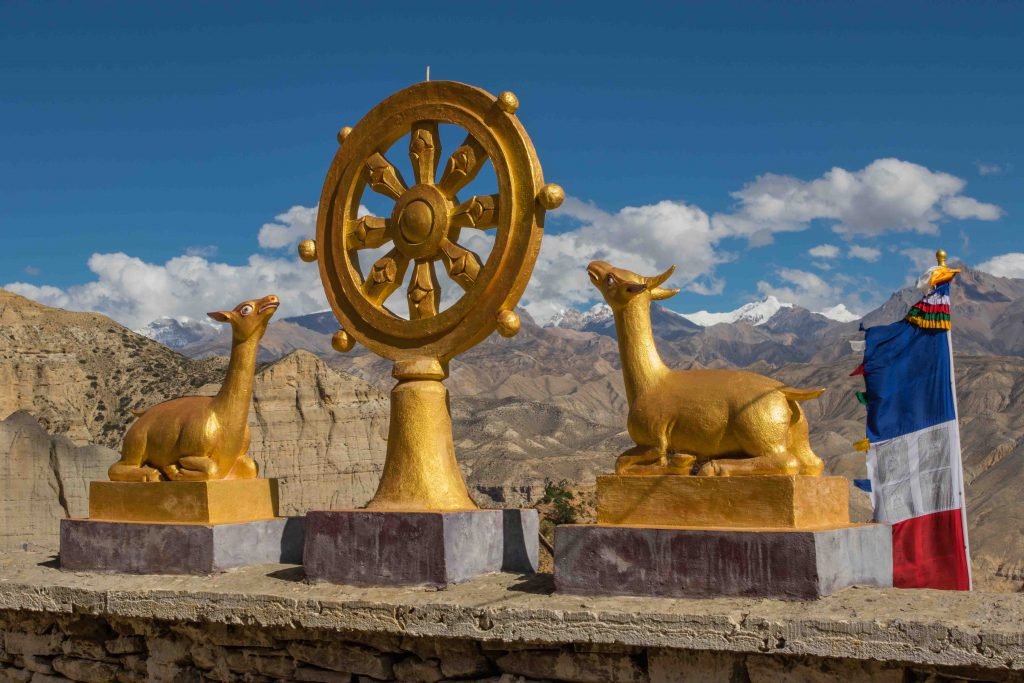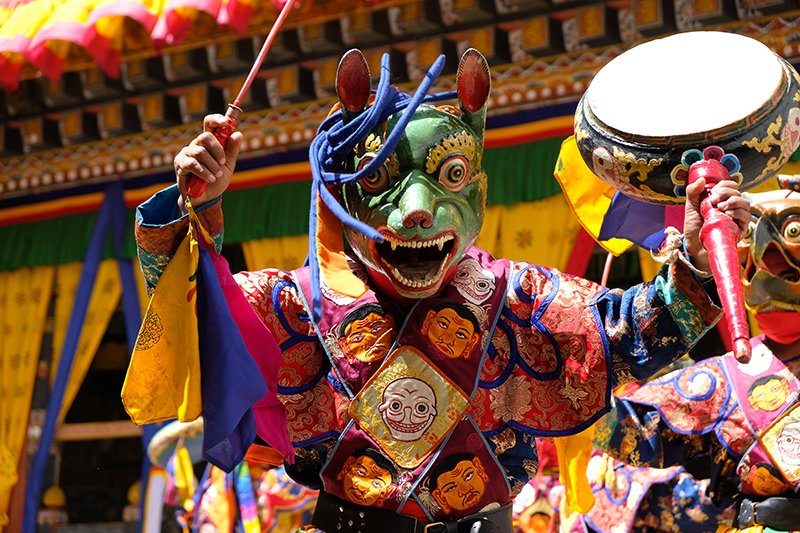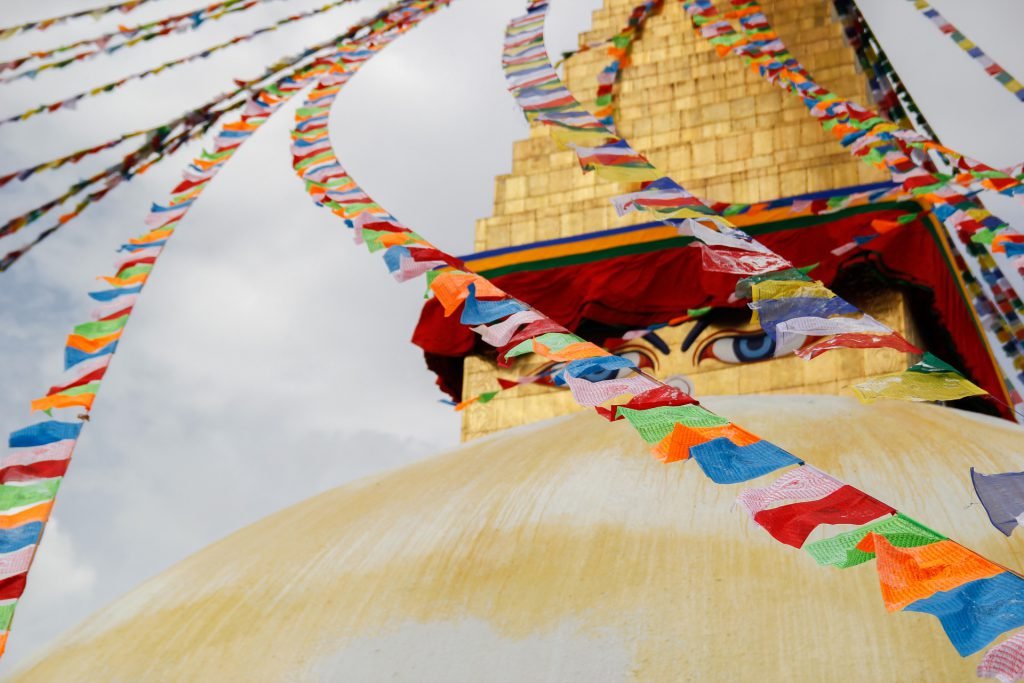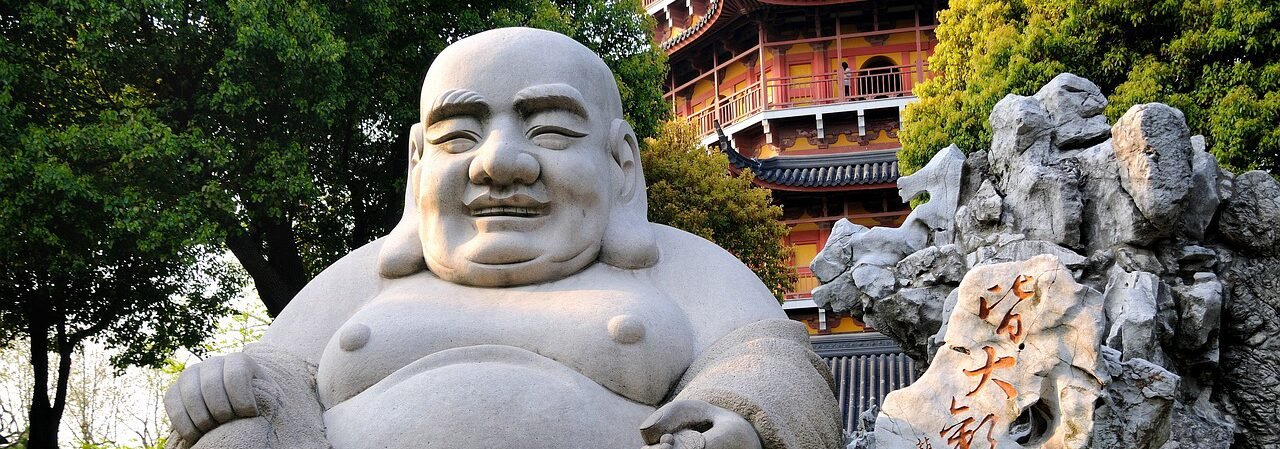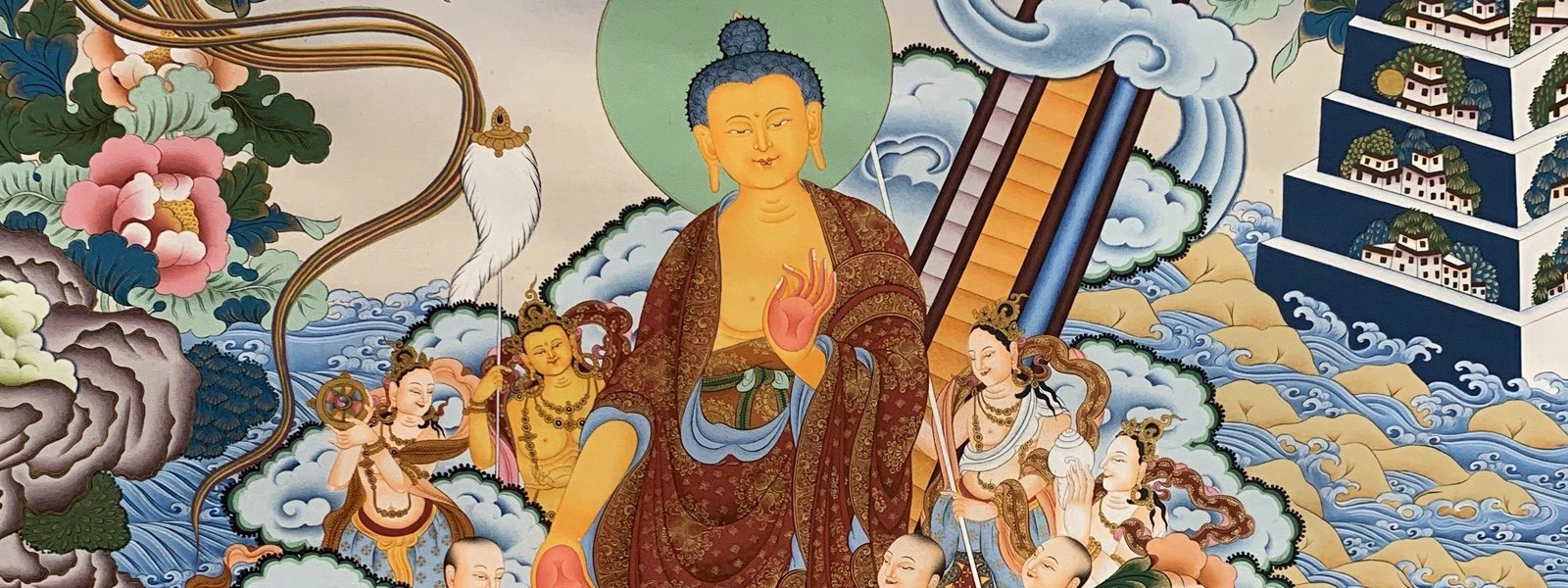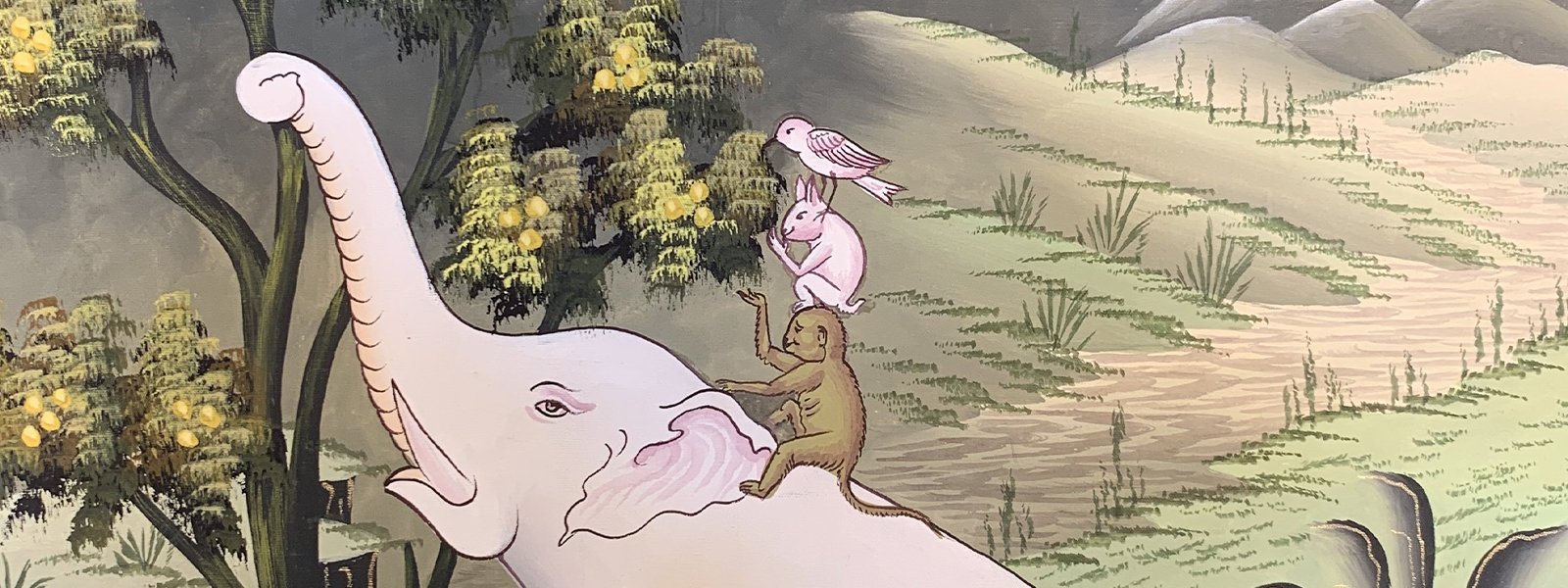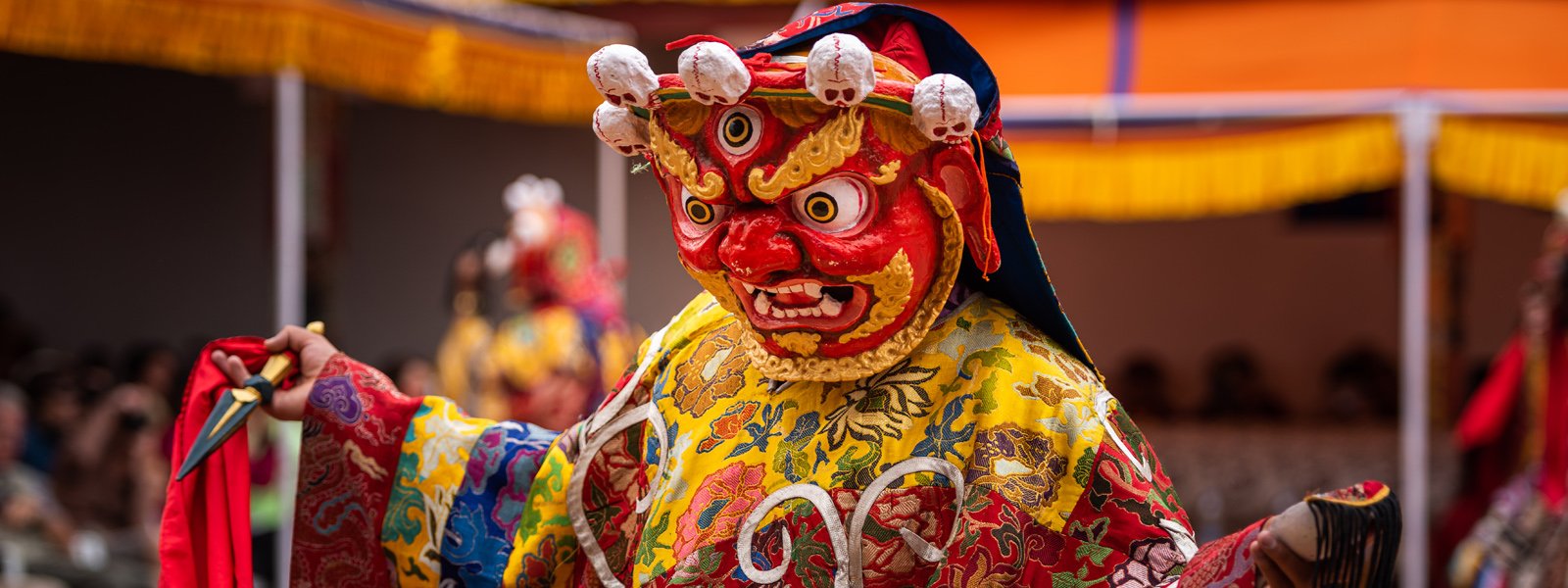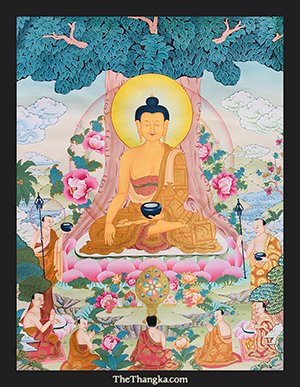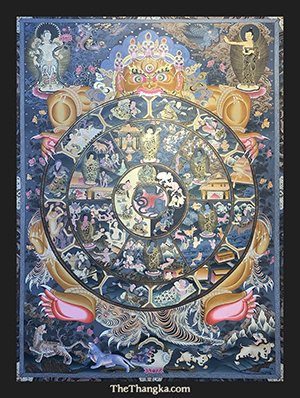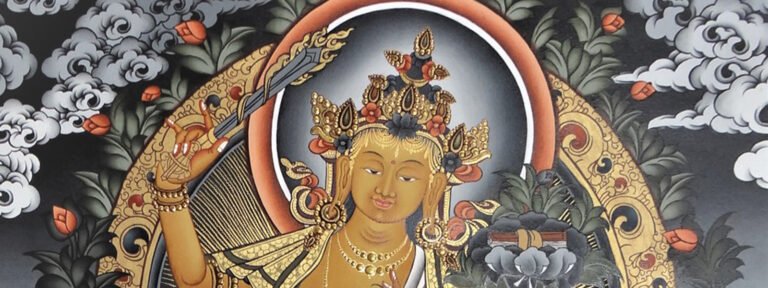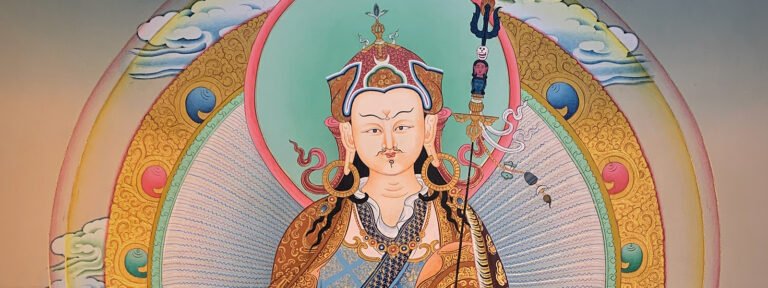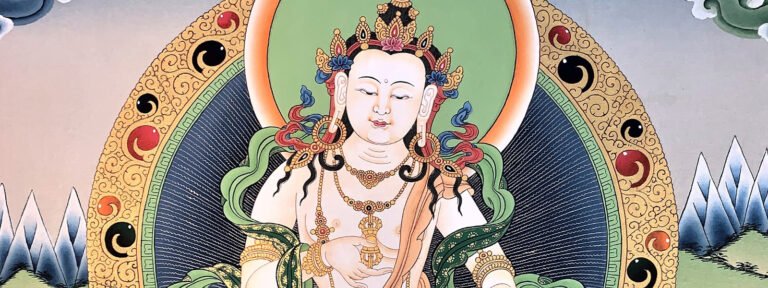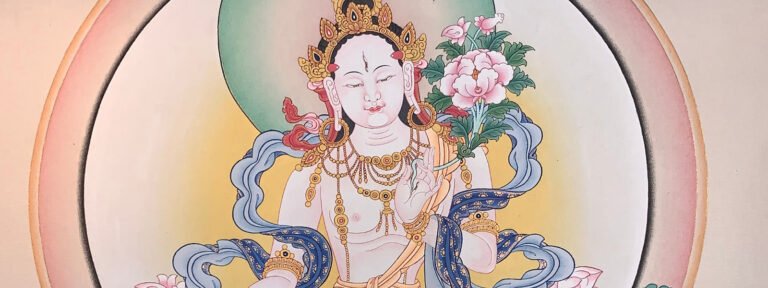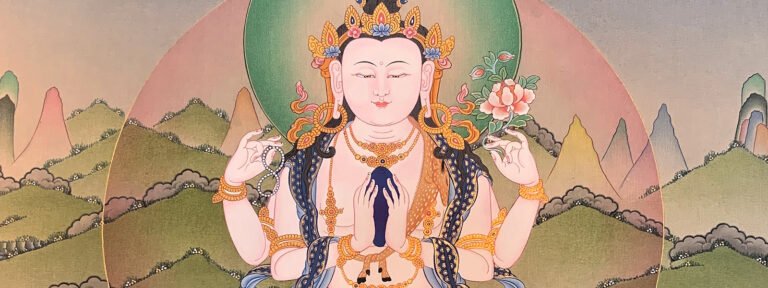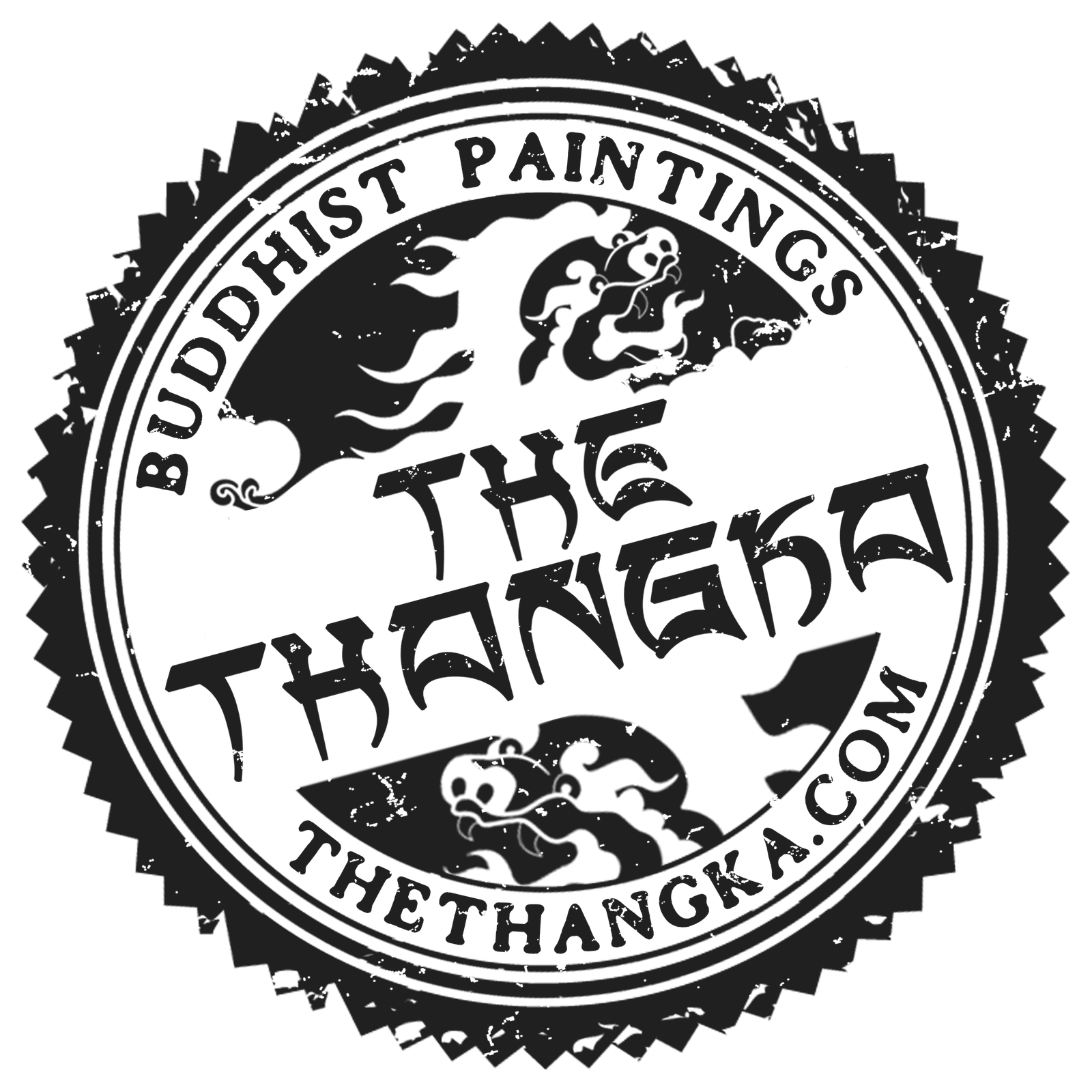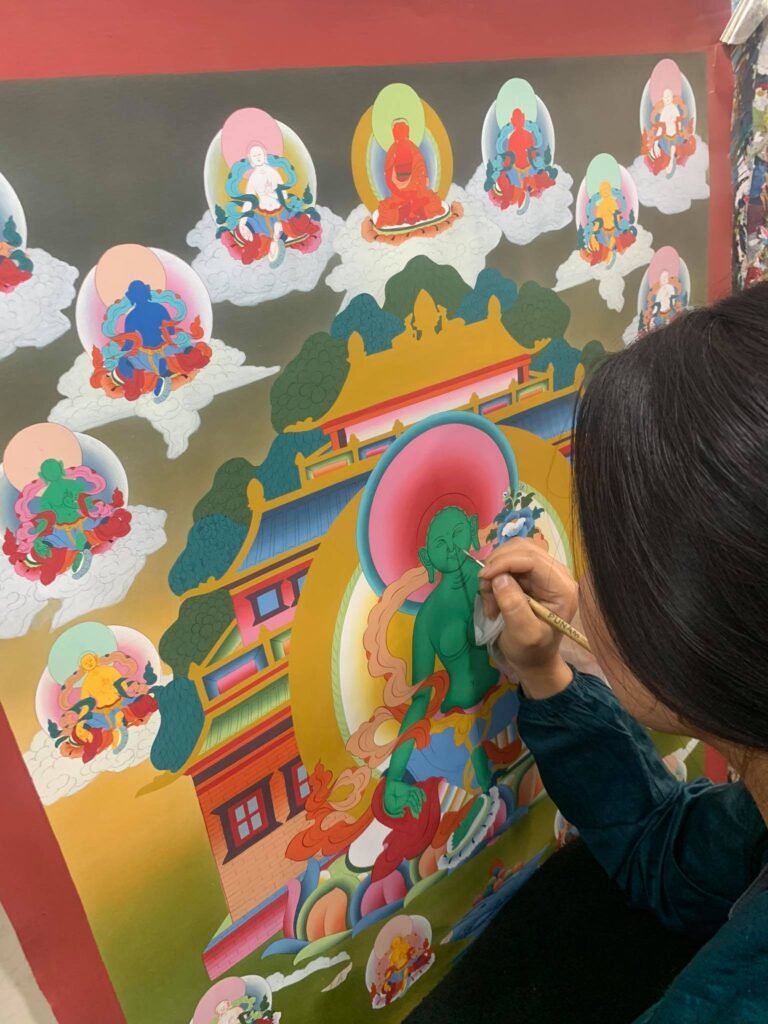Manjushri, meaning ‘beautiful glory’, is a meditational deity of Vajrayana/Tibetan Buddhism, considered a fully enlightened buddha. He is typically classified as a wisdom deity, associated with insight, who promotes development of wisdom, knowledge, language, and memory skills.
Manjushri is depicted as a male bodhisattva, saffron in colour, seated in vajra (meditation) position. In his right hand he holds the sword of wisdom- prajna khadga, destroying the darkness of ignorance with the luminous rays emanating out of it, and severing duality with its blade. In his left hand he holds the stem of a utpala (blue lotus), atop of this blossoming lotus sits the prajnaparamita sutra (book of wisdom), representing his attainment of ultimate realisation from the blossoming of wisdom. He is draped in silk garments and adorned with fine jewellery, a crown and earrings.
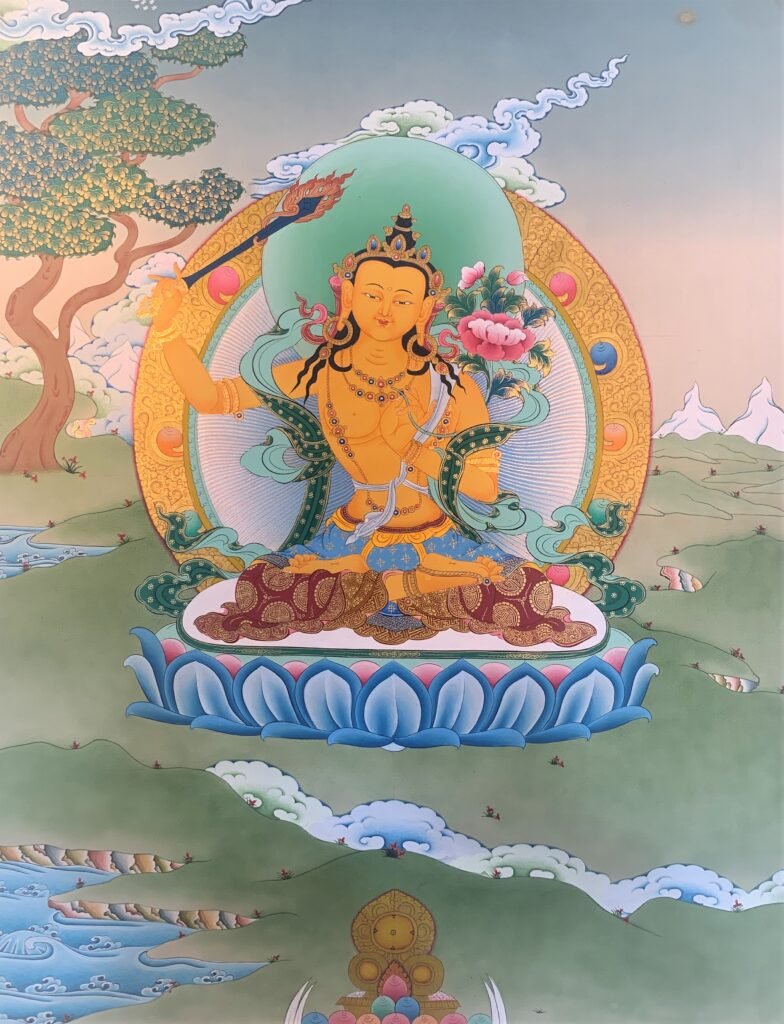
Manjushri has incarnated in many forms, orange, green, blue, white, four-armed, or sitting on a lion. He has come as wrathful protectors like Yamantaka, Kalarup, 4-face Mahakala, black Manjushri, Manju Ghosa ,and many more.The mantra most commonly associated with Manjushri is: oṃ arapacana dhīḥ and is recited to develop the qualities of Manjushri: wisdom, eloquence, memory ,and language skills. Read more about Meaning and Benefits of the Manjushri Mantra.
